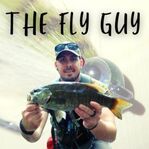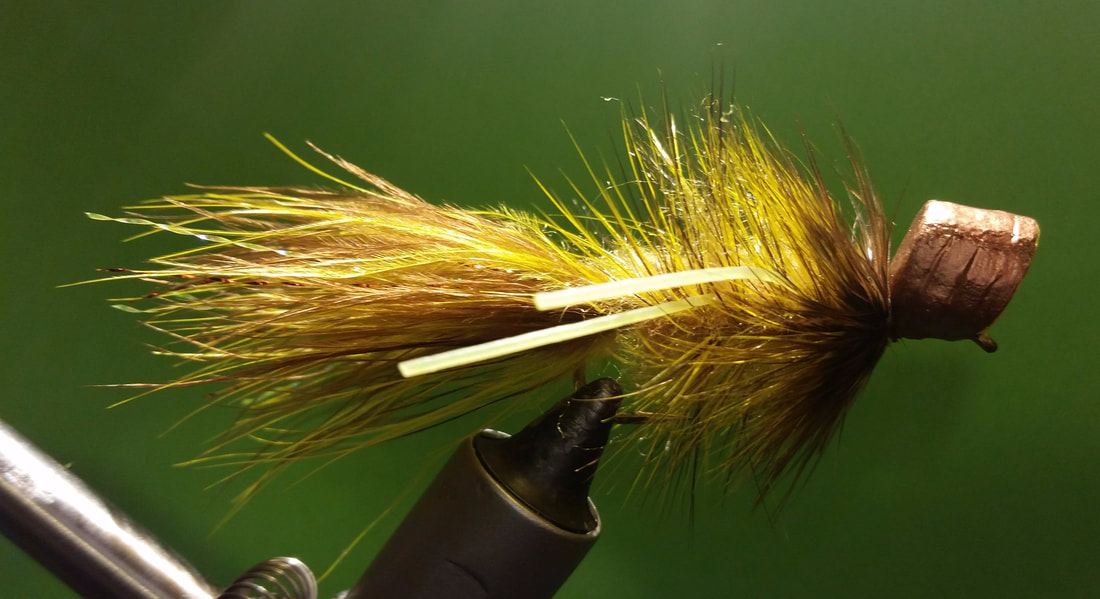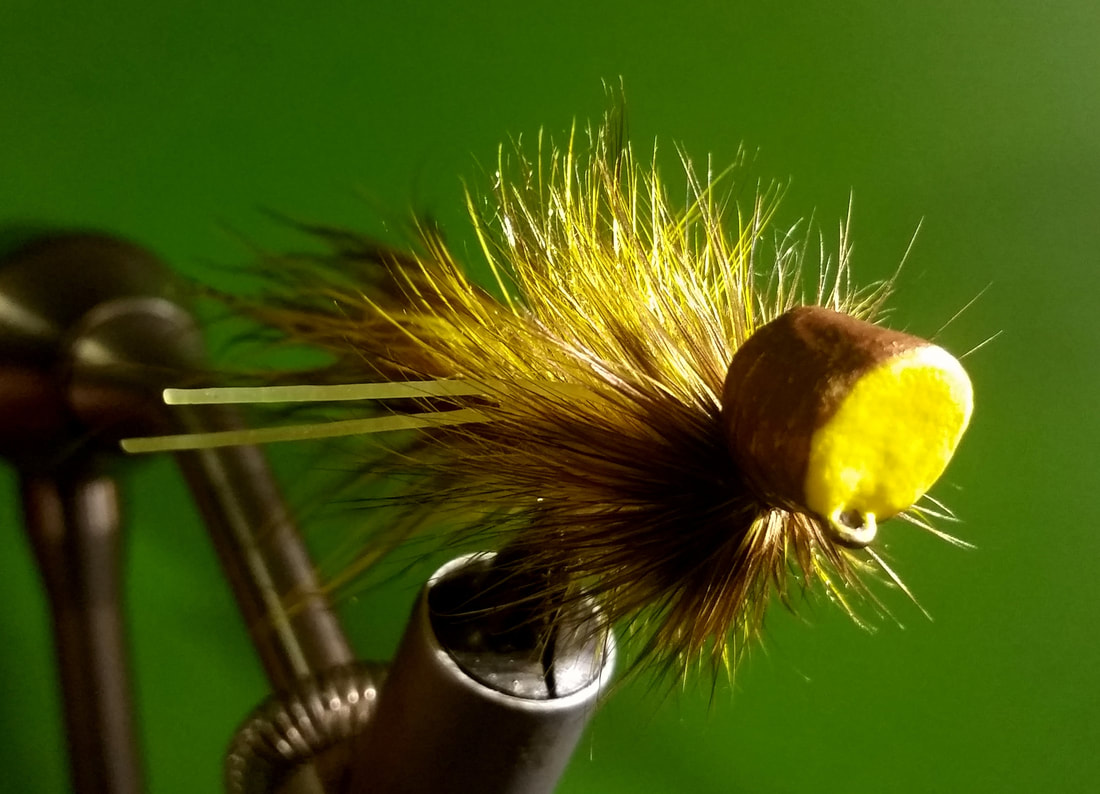Recipe
Hook-3X long 2X heavy streamer hook-size 4
Thread-6/0 brown, yellow, or clear mono
2mm Craft Foam-4 circular discs tied up front and glued together-brown or yellow
Fabric Paint-cover foam with two coats-sides and back brown, front yellow
Tail-brown and yellow marabou hackled towards front and tied back
Krystal Flash-2 yellow and 2 copper on each side of tail
Rib-mono or copper wire (mono works better)
Body-yellow and brown dubbing blend-dubbing loop
Silicone Rubber Legs-hot yellow-two on each side
Saddle Hackle-brown and yellow wrapped back to tail and trapped with rib, counter wrapping to the head of the fly
Soft Hackle-brown and yellow hackled forward (3-5 wraps) then follow with a single brown soft hackle wrapped forward to finish the fly (3-5 wraps)
Material Links
Mustad Streamer Hooks sz 4 or 2
Danville 140 Denier Brown Thread
Craft Foam - 1.5 mm assortment
2 mm assortment
2mm brown
Fabric Paint - Brown
Yellow
Marabou - Brown
Yellow
Flash - Krystal Flash - Yellow
Copper
Dubbing -Yellow
Brown
Rubber Legs
Saddle Hackle
Soft Hackle
Head Cement - Sally Hansen Hard as Nails
Tying Notes
This is one of those patterns that you have to practice and experiment with to get it just the way you want it. The biggest adjustment is tying the foam head. When the foam head is constructed correctly, it will have a flat face and it pushes water! The fabric paint is an optional step but I use it to improve durability and overall appearance. Without anything coating the foam, it will not last but a couple fish. I have added eyes before but they are not necessary. There are all kinds of customizing options to this fly, but the option I have presented has caught me my best and most bass. If you are going to tie a few at a time, I would suggest constructing the heads first, then move into the rest of the fly. This will make things go a lot faster. The rest of the fly is just a woolly bugger! The only other tip that I could give for this pattern is to use a dubbing loop when dubbing the body. This produces a more durable body and makes a fly that will last. Also, this is not a trout nymph! Do not skimp on dubbing. After you tie and hackle the first saddles, you can take a small piece of velcro and tease out the dubbing fibers so that they blend in with the feathers. In my opinion, this creates a super buggy body!
Fishing Tips
This fly is a popper, but what makes it unique is that it pushes a lot of water for its smaller size. When people think topwater bass, they are thinking of bigger offerings. This pattern is small for bass standards but will do great in both still and moving water. It shines in small streams when targeting smallmouth. Your retrieve will depend on the conditions and the fish, but a pop and pause retrieve is always a good starting point. I have casted this close to cover and let it sit for sometimes up to a minute for a bass to commit and eat. Sometimes a steady popping retrieve gets the job done and I have had great success skating this fly as well. Whatever kind of day you choose to throw this fly, you will enjoy the results!



 RSS Feed
RSS Feed